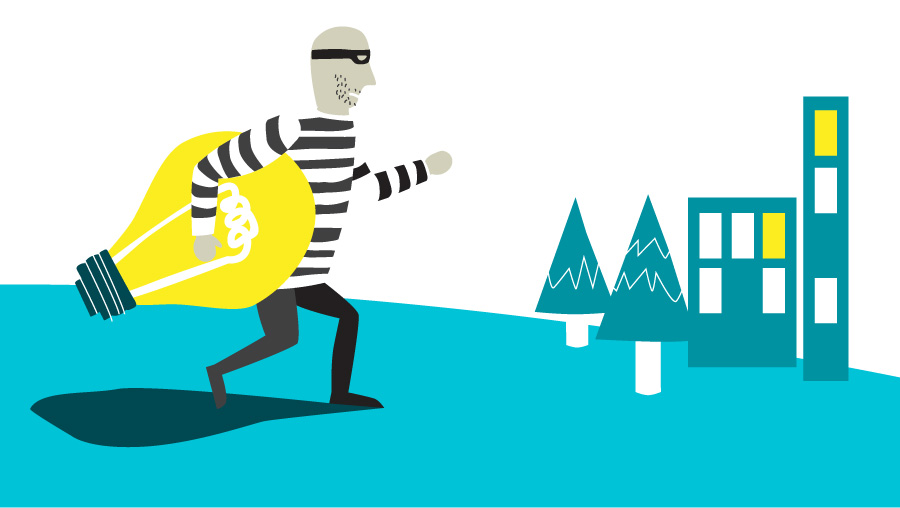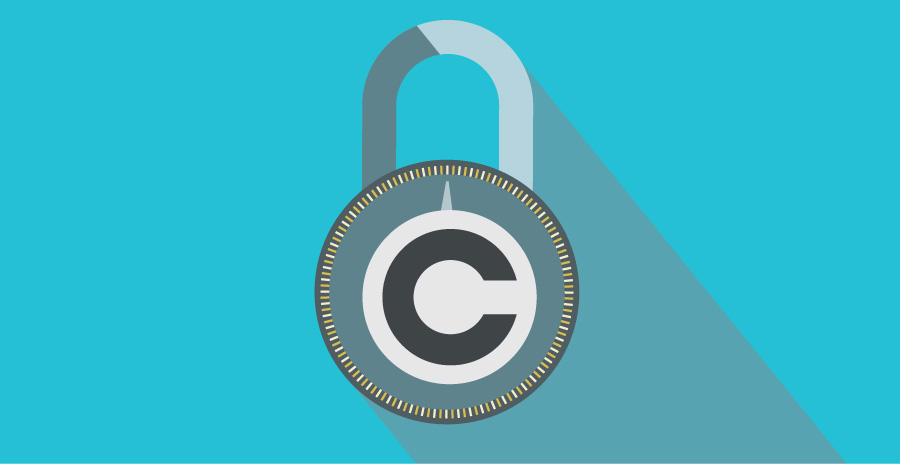what is copyright,
and how does it work?
Ever been to a museum and been stopped by the security personnel for taking photographs of the artworks on display? That’s probably the only time you’ll suffer any consequences for doing what many of us do all the time – infringe someone else’s copyright. In an age where everyone has easy access to copyright-protected designs, images, fonts, music, TV shows, films and software on the internet, intellectual property crime has ballooned.
The design industry is no exception, with both clients and designers equally guilty of the infringement. On the client side, designers’ ideas are routinely ripped off in free pitching scenarios, or a project fee is agreed and the ideas, designs, photographs or illustrations generated for that context alone are used by the client in multiple other contexts. Then there are the fonts, software and images that both clients and designers obtain illegally from various sources, without paying for them. Or the logo or concept ideas that designers frequently plagiarize from other designers.
One reason it happens is that it is just so easy to do, and so many people are doing it that a kind of amoral herd mentality sets in – just go with the flow. And what’s more, no one is watching… most of the time. Another reason is the ignorance that surrounds the whole copyright arena. We are just not aware of what is legal and what isn’t, nor are we aware of the potential consequences.

Copyright theft is a crime punishable by law, so ownership issues relating to intellectual property are very important, and infringing someone else’s copyright opens you up to the real risk of being sued. But it isn’t just a matter of avoiding the costs and legal sanctions associated with prosecution. Design concepts, photography, illustrations, design software and fonts are all created by talented professionals with hard-won expertise. Illegal use of these outputs cheats their creators out of a fair reward for their labours, and the market value of their products.
But for professional graphic designers, it is chiefly an issue of integrity. Designers cannot fairly advocate their own intellectual and creative property rights with clients, without respecting the comparable rights of others. For this reason, designers should be committed to upholding the intellectual property rights of the entire profession, including software and font designers, and images sourced from the internet.
So our aim in this article is to explain what the legal situation is, and the consequences of infringement. We will also explain how both clients and designers can protect themselves from either copyright infringement or legal sanction. Knowing the general principles will save everyone a whole lot of hassle.
What is copyright?
To quote Wikipedia, “Copyright is a legal right created by the law of a country that grants the creator of an original work exclusive rights to its use and distribution, usually for a limited time, with the intention of enabling the creator [e.g. a designer, photographer or author] to receive compensation for their intellectual effort. Copyright is a form of intellectual property applicable to any expressed representation of a creative work.”
In relation to design, copyright law protects the visual or physical expression of a design or idea, and arises automatically on creation of the work. No formal registration with a legal authority is required. The copyright to all designs remains either with the designer or (if he or she is an employee of a branding or design consultancy) with the consultancy which directed the work, unless specifically assigned to the client in writing. This copyright is enforceable for the life of the designer plus fifty years in law.

How does copyright work – what are clients paying for?
Many clients think that when they commission a design project, they are paying for perpetual ownership of all the creative ideas and imagery generated for that project – forever and ever amen. But that isn’t the case – the designer retains legal ownership of the ideas he or she has created – the client is paying for the right to use them in a specific context. When clients pay for the design, they are paying for the right to use the design specifically in relation to the scope of use as agreed in the project brief. Alternative designs generated during the course of the project and submitted to the client (but not ultimately selected by them), will remain the property of the designer, or if they are employed, with the consultancy that commissioned the work. Any extension of usage of the approved design beyond the project in question should be agreed with the designer or consultancy in writing beforehand.
The intellectual property rights on work-in-progress or alternative ideas, at whatever stage of the project, remain the property of the designer or consultant until the fees for the design have been fully paid. Likewise the copyright to all creative services outsourced by the design consultant such as photography, illustration, calligraphy, etc., remains with the originator of those works, unless otherwise agreed in writing with the originator of the work.
Any unauthorised reproduction or copying of a design without the copyright owners’ consent amounts to an infringement of the design. This infringement will then make the person or company responsible liable to prosecution.
So now we’ve explained what copyright is and how it works, what are the consequences
of infringement? Check out our next blog post, “The Copyright Minefield – Part 2” for answers.





Thanks for nice article.. 🙂